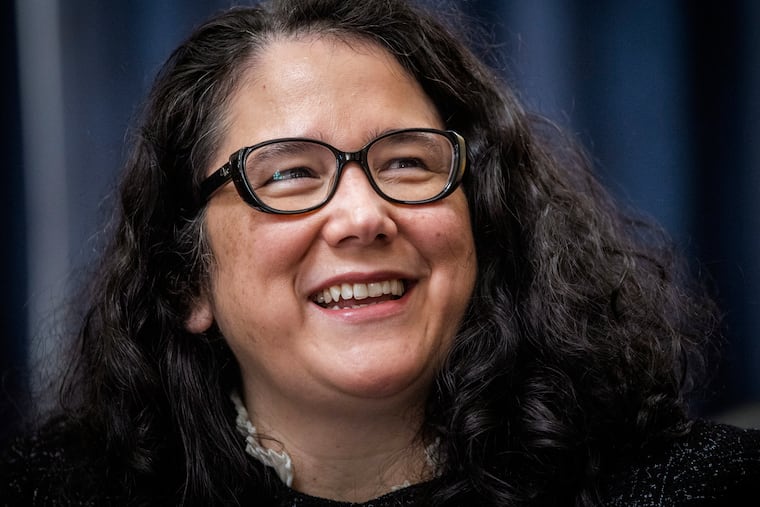Small businesses have until year’s end to get $100 billion in expiring SBA funds
Just about every business in the area has been affected by COVID-19 and is likely eligible for one of these SBA loans.

Time is running out for businesses to get COVID funding from the Small Business Administration. Are you leaving money on the table? Unfortunately, many are.
The Economic Injury Disaster Loan program, or EIDL, was created as an offshoot of the agency’s existing disaster loan programs. It is specifically targeted at businesses in disaster areas caused by the COVID-19 pandemic. Since its introduction, billions have been distributed in the form of loans and grants to millions of small businesses.
As of last week, almost $300 billion in loans and grants has been approved by the SBA. About 282,000 small businesses in Pennsylvania and New Jersey took part in the programs, receiving about $20 billion in loans and grants since the program’s inception.
But there’s more money available. About $100 billion more. So why not apply? “I don’t think we’re eligible,” one client told me recently. “I just don’t have the time to go through the process,” another said.
To me, that’s unacceptable.
The fact is that just about every business in the area has been affected by COVID-19 and is likely eligible for one of these loans. In addition to the loans, many businesses in low-income areas are also eligible for grants. If you’re one of these businesses and you don’t step up and apply by Dec. 31, you’ve basically passed on a great opportunity.
So please consider these three things:
EIDL terms are very attractive
The first is that if you’re a small business with fewer than 500 employees, you can likely be approved for an EIDL. The loan amounts — thanks to recent changes to the program — can be as much as $2 million (collateral and personal guarantees may be required). The interest rate is 3.75% for for-profit companies and 2.75% for nonprofits which, when considering that most economists believe that rates will be rising this year to counter inflation, will soon become very attractive. The maturity period for these loans is 30 years. If you do the math, this all adds up to a fixed monthly payment of less than $500 for a $100,000 loan. Not bad, right?
EIDL rules just got lighter
The second thing to consider is that the government is pretty much begging businesses to apply. So much so that in September, the SBA changed some significant rules to entice more business owners to participate in the program. Among those changes was an increase in the EIDL cap to $2 million, allowing businesses to defer beginning payments for two years after getting a loan. The funds could also be used to pay down commercial and federal business debts in addition to funding their working capital needs. The agency also simplified the rules for restaurant borrowers.
“We’ve retooled this critical program,” SBA Administrator Isabella Casillas Guzman said in a statement. “Our mission-driven SBA team has been working around the clock to make the loan review process as user-friendly as possible to ensure every entrepreneur who needs help can get the capital they need to reopen, recover and rebuild.”
There are also small-business grants
Third, and just as important, are generous grants available for the smallest of businesses with the greatest needs. For businesses in low-income communities (and you can find out whether yours is here), you may be eligible for both an EIDL Targeted Advance and Supplemental Advance grant.
The Targeted EIDL Advance program provides funding of up to $10,000 for working capital and other operating expenses that does not have to be repaid. If your business can demonstrate more than a 30% reduction in revenue during an eight-week period beginning on March 2, 2020, or later and has fewer than 300 employees, then you’re likely eligible, and this includes sole proprietors, independent contractors, and private, nonprofit organizations.
If you’ve got fewer than 10 employees and can provide evidence of a 50% revenue loss during the same period, then you may be eligible for an additional $5,000 under the agency’s Supplemental Targeted Advance Program.
Even if you’ve previously received funds through the SBA’s Paycheck Protection Program, the Restaurant Revitalization Fund, or the Shuttered Venue Operators Grant, you can still can still benefit from the EIDL program.
I’ve been advising my clients to re-visit these programs now while there’s still time. Many don’t realize that they’re eligible and that the cost of capital — particularly in this inflationary environment — is attractive.
Many other businesses in the low-income areas of the Philadelphia region don’t realize that they’re also eligible for grants that can fund both payroll and operating cost increases. It’s a shame to leave this money on the table, and the SBA is trying hard to make the application process as easy as possible.
“We know that government can be hard to navigate,” Guzman recently told me. “We’re trying to simplify the loan process because our customers are small businesses who have to wear so many hats and have so many responsibilities and need a team behind them. So I view the SBA as their team and we’re here to support them.”
Gene Marks is a certified public accountant and the owner of the Marks Group, a technology and financial management consulting firm in Bala Cynwyd.